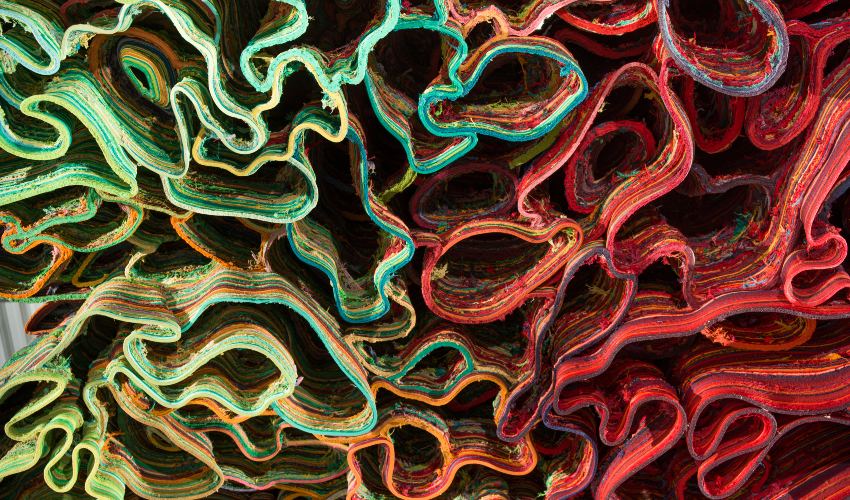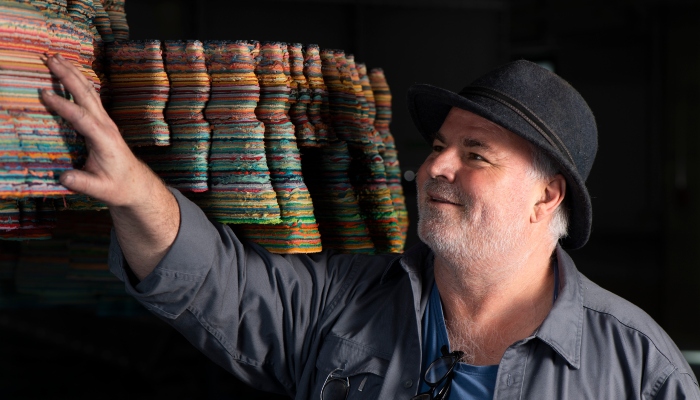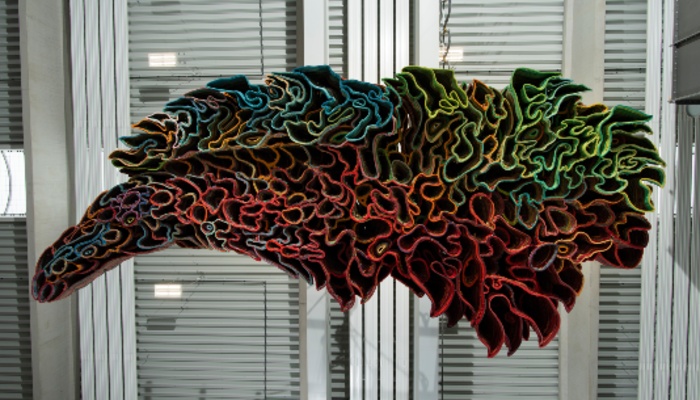Peter Lang’s 3D Printed ‘Silent Orchestra’

Sound absorbers, as the name suggests, are used primarily to silence certain noises in a room, helping to ultimately improve the acoustics by reducing unwanted sound. They are used by many different interested parties, but especially musicians. At the same time, these sound absorbers, which are usually attached to the walls or ceiling, are intended to stylistically beautify the room. This is exactly where the artist Peter Lang comes in: He was able to create a room sculpture as a sound absorber called “Silent Orchestra” with the help of 3D printing. This unusual art object with a sound-absorbing function consists of tubes of different sizes arranged in a honeycomb pattern.
The painter and graphic designer was inspired by wasps’ and hornets’ nests for his art design. Finally, he was able to refine and develop his basic idea in collaboration with acoustics experts from the Rosenheim University of Applied Sciences. For the final implementation of his project, the Bavarian joined forces with additive tectonics. This company is a subsidiary of the FIT Additive Manufacturing Group, a leading international industry partner for additive manufacturing that has been producing prototypes, production aids, 3D-printed spare parts or additively manufactured final components for a wide range of customers for over 25 years.

Peter Lang poses next to his artwork “Silent Orchestra.” (Photo credit: FIT AG/Martin Hangen)
The manufacturing process
In fact, it took a whole 10 months from the basic idea to the start of production. During this time, Peter Lang decided to produce his unique art object using a mixture of conventional and innovative processes. That is, he wanted to work with both analog and digital. The first thing he did was to break down the model into 43 layers and draw the object outline of each layer by hand on 3 x 6 meter fleece sheets. After these analog steps, digitization came into play: the drawings were hung, arranged, photographed and then edited online. This made it possible to create a three-dimensional digital data model that is the basis of any 3D print.
Additive manufacturing was carried out using the classic FDM process by a robotic arm that applied the material layer by layer via an extrusion nozzle. The material used is Tecnaro’s Arboblend biopolymer, which is 100% bio-based, again showing the importance of sustainability for this project. Peter also added beer as a natural adhesive, as well as hand-selected pigments. To create the most uniform plane possible, development engineers at additive tectonics also programmed a complex algorithm that ensured that the extruder’s pathway could traverse the entire object without overlapping. After two months of production, his project was then completed. The result? A unique work of art with a sound absorbtion effect that combines the finest craftsmanship with the latest technology. You can find out more in the press release HERE.

The 3D-printed room sculpture serves as an acoustic element. (Photo credit: FIT AG/Martin Hangen)
What do you think of Peter Lang’s 3D printed ‘Silent Orchestra?’ Let us know in a comment below or on our Facebook, Twitter and LinkedIn pages! Sign up for our free weekly Newsletter here, the latest 3D printing news straight to your inbox!
*Cover photo credit: FIT AG/Martin Hangen






